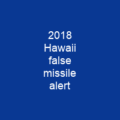STSS constellation consists of two satellites orbiting at 1350 km, 58. 0° inclination, with 120 minute period. It was reported that several items of debris, identified by amateur satellite watchers as remnants of the Delta-2 launch vehicle, had crashed in a field in Mongolia on 19 February 2010.
About Space Tracking and Surveillance System in brief

The demonstration satellites detected and tracked a two-stage Ground-Based Interceptor during a U.S. Missile Defense Agency flight test on 6 June 2010. According to Congressional testimony, military officials believe that STSS has the potential to bolster the nation’s missile defense system. The STSS program is developed in phases, the first of which is the launch of two demonstrator satellites. The demonstrators will perform experiments and prove out systems and processes to establish a knowledge base for future operational designs.
You want to know more about Space Tracking and Surveillance System?
This page is based on the article Space Tracking and Surveillance System published in Wikipedia (as of Dec. 31, 2020) and was automatically summarized using artificial intelligence.






